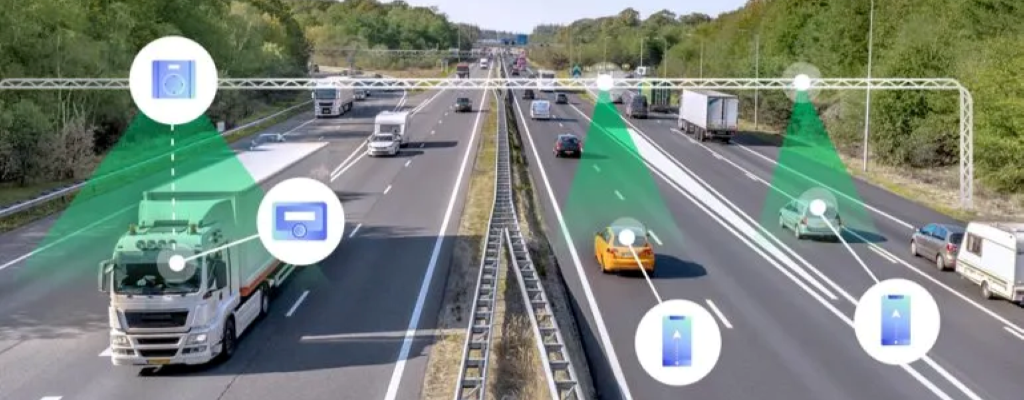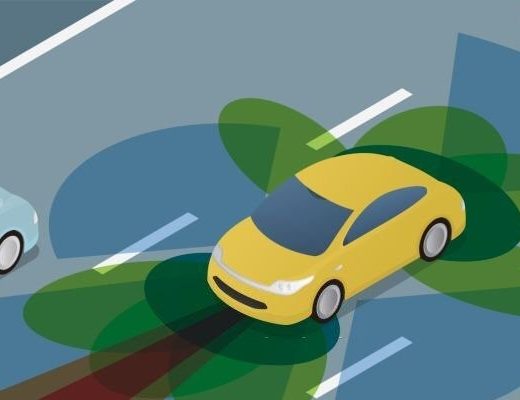The transportation sector in India has been rapidly evolving over the years, with millions of people relying on public transport to commute daily. As the demand for public transport continues to grow, the government has taken several measures to address congestion and safety issues within the sector. One of the most widely implemented methods to mitigate such traffic problems is the Intelligent Transportation System (ITS), which includes traffic management solutions, public transport management, emergency management, and more. As a part of this initiative, all public vehicles, except for three-wheelers and e-rickshaws, are now required to obtain Automotive Industry Standard (AIS) 140 certification.
What is AIS 140?
The Ministry of Road Transport and Highways (MoRTH) oversees automotive regulations in India and serves as the nodal ministry for the automotive sector. These regulations are governed by the Automotive Industry Standards (AIS), based on norms established by the United Nations Economic Commission for Europe (UNECE). The AIS guidelines are developed by the Automotive Industry Standard Committee (AISC), then amended and approved by MoRTH before being published by the Automotive Research Association of India (ARAI). These standards aim to promote road safety, establish an Intelligent Transportation System (ITS) in India, and apply to commercial and public transportation vehicles in India.
AIS 140-compliant devices track vehicles using the Global Positioning System (GPS), Indian Regional Navigation Satellite System (IRNSS), and GSM (General Packet Radio Service) modems. They may also include provisions for hybrid navigation constellations such as GLONASS and Galileo.

Significance of AIS 140 Standards
AIS 140 standards integrate globally recognised ITS, optimising infrastructure and enhancing safety, comfort, and efficiency. The MoRTH issued a directive mandating the implementation of AIS 140 from January 1, 2019, to register all new commercial and public vehicles. According to AIS 140, all Commercial and Public Transport vehicles should be able to transmit real-time location and other vehicle performance information. Additionally, they should consist of one or more emergency buttons across the vehicle.
Key Highlights of AIS 140 Standards
- Automatic Vehicle Location Tracking
- Vehicle Health Monitoring
- In-vehicle Video Surveillance and Recording
- Emergency Request
- In-vehicle Passenger Information
- In-vehicle automatic ticketing
Sector-wise Mandatory Adoption of ITS Standards
- State Road Transport Corporations
- Domestic and Interstate Private Bus Operators
- Ambulances and Emergency Response Vehicles
- All Educational Institutions
- Cars, Bus and Taxi Fleet Owners
- Rent-a-Car Services
- Taxi Ride-Hailing Services
Evolution of AIS 140 Standards
The AIS 140 mandate, which encompasses guidelines for vehicle safety and tracking systems, has undergone significant developments over the years to enhance road safety. Here is a timeline of key milestones:
- 1989: The requirement to install emergency buttons in all vehicles was introduced, marking the initial step towards improved safety measures.
- 2018: The AIS 140 guidelines became mandatory for public transportation buses to standardise safety protocols across the public transport sector.
- 2019: The AIS 140 standards were extended to cover the entire public transport sector, ensuring uniformity in safety standards.
- 2022: Recognizing the importance of AIS 140 in the commercial sector, the government mandated its implementation for all N2 and N3 vehicles and vehicles transporting hazardous goods. Manufacturers were required to integrate GPS devices into new vehicle models by September 2022, with existing models needed to comply by January 2023.
These developments highlight the government’s commitment to leveraging technology to enhance road safety and ensure compliance with standardised regulations across various vehicle categories.
Key AIS 140 Regulations for Hardware
Key regulations outlined in AIS 140 standards pertain to the hardware component of transportation systems. These regulations are crucial for ensuring compliance and safety standards within the transportation industry. The key regulations include:

-
GPS Tracker Requirement: Vehicles must use GNSS trackers to transmit information instead of relying on cellular data or SIM cards. This ensures precise and dependable data collection for effective tracking and monitoring. The device should be able to retrieve information via the Global Navigation Satellite System and should also support GPS-aided GEO Augmented Navigation (GAGAN), the Indian satellite-based augmentation system.
-
Backup Battery Specification: GPS tracking devices installed in vehicles should be equipped with a backup battery that lasts at least 4 hours. This ensures uninterrupted functionality, even when the primary power source is unavailable.
-
Emergency Button Mandate: Each vehicle must have an emergency button system to send essential data, such as the vehicle’s location, to two designated IP addresses. These addresses typically include a government database and an emergency support system, enabling swift response in critical situations.
-
Security and Tamper-Proofing: GPS tracking devices must feature robust security measures to prevent tampering and unauthorised access. This ensures the integrity of the data entered into the database, enhancing overall system reliability and accuracy.
-
Data Transmission via GSM/GPRS: Devices must transmit position, velocity and time (PVT) data to back-end control rooms using GSM/GPRS networks, ensuring real-time tracking and monitoring.
-
Communication Interface: Devices should support 4 digital, 2 analogue, and 1 serial communication (RS232) for seamless integration with external peripherals like emergency buttons.
-
Embedded SIM Requirement: GPS devices must operate with an embedded SIM (e-SIM), enhancing convenience and functionality.
-
Multi-Slot GPRS Module: Devices should feature a multi-slot GPRS module with quad-band capability, ensuring a lifespan of at least ten years and more than 1 million read/write cycles.
-
Antenna Flexibility: While internal antennas are preferred, devices may use external antennas if the fitment location hinders internal antenna functionality.
-
Durability and Resistance: Devices must be dust, temperature, vibration, and water-splash resistant, preferably IP65 rated or better, ensuring durability in harsh conditions.
-
A-GPS Support and Unique IMEI: Devices should support A-GPS and possess a unique IMEI number, enhancing accuracy and traceability.
-
Accelerometer and Gyroscope Integration: Integration of a three-axis accelerometer and gyroscope enables alerts for harsh driving behaviours like braking and acceleration.
-
Voltage Compatibility: Devices must operate within the voltage range of 8VDC to 32VDC, compatible with vehicle battery input voltages of 12/24 volts.
Key AIS 140 Regulations for Software
Key regulations outlined in AIS 140 standards extend to the software aspect of GPS tracking systems, dictating specific requirements to ensure optimal functionality. These regulations include:

-
Compatibility Consideration: Software selected for tracking AIS 140-certified GPS devices must prioritise compatibility. It should seamlessly integrate with the designated trackers to facilitate efficient data collection and management.
-
Enhanced Tracking Capabilities: The software should offer comprehensive features beyond basic location tracking. This includes maintaining detailed records of vehicle performance metrics, maintenance schedules, and other relevant data points to facilitate informed decision-making.
-
Emergency Alert Mechanism: System managers must receive alerts promptly to address potential safety concerns. In situations where internet connectivity is unavailable, the software should be able to send alerts via SMS, ensuring timely notifications and responses. The device transmits emergency events to a second IP address reserved for the emergency response system. Once pressed, the emergency/panic button should initiate an alarm to the configured IP address(s) as per standard.
-
Customizable Data Transmission Frequency: The data transmission frequency is customizable, ranging from every five seconds to a maximum of 10 minutes in power saver/sleep mode, optimising efficiency.
-
OTA Firmware and Configuration Updates: Devices required to support ‘Over The Air’ (OTA) firmware and configuration updates, ensuring seamless updates for optimal performance.
-
Offline Alert Storage and Priority Transmission: In case of reception loss (GSM and GPRS), alerts are stored in the device once the network becomes available, ensuring priority transmission to configured addresses.
Key AIS 140 Regulations for Server
AIS 140 regulations for server compliance necessitate adherence to specific standards to ensure efficient storage and management of data collected by GPS devices. These standards are instrumental in enhancing fleet operations’ safety and precision. Important regulations include:
-
Adequate Storage Capacity: The system utilised alongside GPS trackers must possess sufficient storage capacity. It should retain vehicle data for at least 90 days post-event, ensuring comprehensive data availability for analysis and review.
-
Document Verification: Vehicle and driver documents must be verified before granting access. This verification process adds a layer of security, ensuring that only authorised personnel can access sensitive information stored within the system.
Key Features of AIS 140-Compliant Devices
AIS 140 devices offer advanced features, including:
- Global Navigation Satellite System Tracking
- Emergency Button(s)
- Dual IP Addresses
- Internal Battery Backup
- Accelerometer and Gyroscope
- Embedded SIM and Tamper-proof Design
- Differentiation from Standard GPS Devices
Advantages of AIS 140 Standards
Implementing the AIS 140 regulations brings about transformative changes in vehicle operations and road safety. While some fleet businesses may face initial challenges in meeting the mandated criteria, the benefits far outweigh the drawbacks:

-
Increased Demand for GPS: The widespread adoption of AIS 140 guidelines leads to a surge in demand for GPS devices and software. This results in more connected vehicles on the roads, making the goal of having 55% of commercial trucks connected by 2025 more attainable.
-
Enhanced Safety: Integrating emergency SoS buttons in public vehicles reduces the risk of fatalities in accidents. Moreover, vehicle maintenance and GPS tracking decrease overall accident rates. Studies indicate that fleets using GPS tracking experience a significant reduction of up to 42% in accidents.
-
Improved Visibility: Managing a large fleet becomes more manageable with GPS tracking. Fleet managers gain better insight into the location and activities of each vehicle, facilitating more effective supervision and coordination.
-
Optimisation: AIS 140 regulations emphasise vehicle health maintenance and safe driving practices. This encourages fleet operators to focus on comprehensive optimisation strategies rather than solely tracking vehicle locations.
-
Driver Accountability: Continuous monitoring encourages drivers to adhere to traffic laws, reducing accidents and traffic violations.
-
Efficient Fleet Management: Government fleet managers leverage vehicle tracking systems to optimise fleet operations through efficient maintenance scheduling and route planning.
-
Route Optimization: AIS 140-compliant systems empower drivers to select the most efficient routes, ensuring timely arrivals and reducing fuel consumption.
-
Tamper Alerts: The telematics device triggers an alert on the dashboard if any attempt is made to tamper with the vehicle tracking device.
Vehicles Mandated to Equip AIS 140 Certified Tracking Devices
It is mandatory for all public service vehicles, whether run by governmental or private entities, to have tracking devices certified by AIS 140. This rule applies to different categories of vehicles, including inner-city public transport vehicles, school buses, employee transportation buses/cabs, inter-city public transport vehicles, and others.
For example, since April 1st, 2018, the government has directed every state’s public transport department to ensure that all passenger-carrying buses comply with the guidelines stated in AIS 140. To comply, every bus must have a GPS tracking system, camera surveillance, and an emergency button. This will enable the department to track the bus in an emergency and allow passengers to report any mishaps or other emergencies to the control room. Both existing and future vehicles must have GPS and emergency buttons fitted.
Standard Tracking Device vs Device Equipped with AIS 140
The AIS 140 tracking device differs from standard tracking devices primarily in its ability to simultaneously transmit location data to multiple servers. While a standard GPS device typically notifies the vehicle’s location to a single server, an AIS 140 GPS device can send the whereabouts to three servers concurrently. These servers may include the institution’s server, an SOS server utilised by the police, and the Government Command and Control Centre.
AIS 140 Non-Compliance Consequences
Failure to have AIS 140 tracking enabled for vehicles can result in significant consequences. These may include:
-
Legal Violations: Non-compliance with AIS 140 regulations may lead to legal repercussions, fines, and penalties imposed by regulatory authorities.
-
Transport Permit Revocation: Authorities may revoke the transport permit for vehicles found non-compliant with AIS 140 tracking requirements.
-
Safety Concerns: Without AIS 140 tracking, vehicles may lack essential safety features such as real-time monitoring and emergency alert systems, compromising passenger safety.
-
Operational Disruptions: Vehicles without AIS 140 tracking may face operational disruptions, such as restrictions on vehicle usage or limitations on accessing specific routes or areas.
-
Reputation Damage: Companies or organisations operating vehicles without AIS 140 tracking may suffer reputational damage due to safety standards and regulatory compliance concerns.
-
Increased Risk: Vehicles without AIS 140 tracks are at a higher risk of theft, misuse, or unauthorised use, leading to potential financial losses and liabilities.
Summary
Adopting the AIS 140 standard is crucial for driving the transformation of the transportation industry. Once this standard is fully established, integrating Advanced Driver Assistance Systems (ADAS) and Augmented Reality (AR) in public transport vehicles will be expedited, leading to a much-needed change in the transport sector. AIS 140 certification is a significant step towards safer and more efficient public transportation in India. By embracing these standards, the nation is ready to revolutionise its transportation infrastructure, ensuring enhanced safety and convenience for all passengers.



